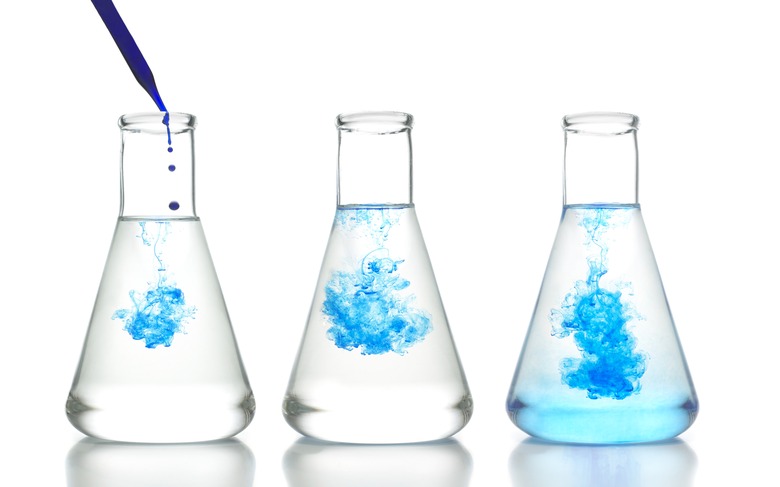Diffusion Lab Experiments
Diffusion is a physical phenomenon that occurs everywhere, and we barely notice it or understand how it works. However, a few simple experiments can reveal the mysterious nature of this simple phenomenon.
Preparing for the Experiments
Preparing for the Experiments
Taking some time to set these experiments up can make your life much easier and allow you to better focus on the results of the experiment. First, grab three glass beakers. Make sure the beakers are transparent. Fill a large pitcher of water or do your experiments near a tap. Also, get three different colors of food dye. To be very precise, you will want a thermometer, but you don't need one unless you are picky. Also have a timer or stopwatch. Finally, make sure you have some way of heating or cooling the water before you start.
Observing Simple Diffusion
Observing Simple Diffusion
This is by far the most simple experiment. However, you'll have to know beforehand that diffusion is the propagation of a substance from an area of high concentration to an area of low concentration, the purpose of which is to reach a state of equilibrium, or a state in which there is an even concentration of a substance across a medium. Now that you know what diffusion is, you need to see it yourself. Take a beaker and fill it with water to around three-quarters. Now, simply pour a small amount of food dye into the water. Observe whether the dye diffuses from a high concentration to a low concentration and try to observe where those two states occur. This will give you a good idea of what diffusion looks like.
Testing How Temperature Affects Diffusion
Testing How Temperature Affects Diffusion
Now, all your preparation will come to fruition. Fill all three beakers with tap water to around three-quarters filled. The tap water should be around 50 to 60 degrees Fahrenheit, or as close as you can get. Now, cool one beaker by placing it in a refrigerator or similar device. Heat the other beaker with a stove, microwave or, if you have one, a Bunsen burner. You can make the temperatures of all thee beakers whatever you want, really. The important thing is that one is around 20 degrees hotter than another, which is around 20 degrees hotter than another. Finally, put one color of dye in each beaker and observe the diffusion. Your objective in this experiment should be to measure how fast each dye diffuses through each temperature of water. Make sure to write down how fast the dye diffuses in each temperature of water.
References
Cite This Article
MLA
Scott, David. "Diffusion Lab Experiments" sciencing.com, https://www.sciencing.com/diffusion-lab-experiments-6169176/. 1 April 2010.
APA
Scott, David. (2010, April 1). Diffusion Lab Experiments. sciencing.com. Retrieved from https://www.sciencing.com/diffusion-lab-experiments-6169176/
Chicago
Scott, David. Diffusion Lab Experiments last modified March 24, 2022. https://www.sciencing.com/diffusion-lab-experiments-6169176/
